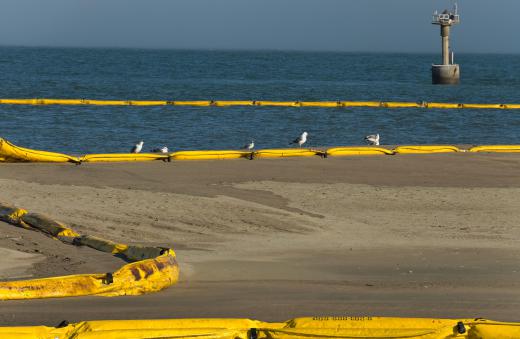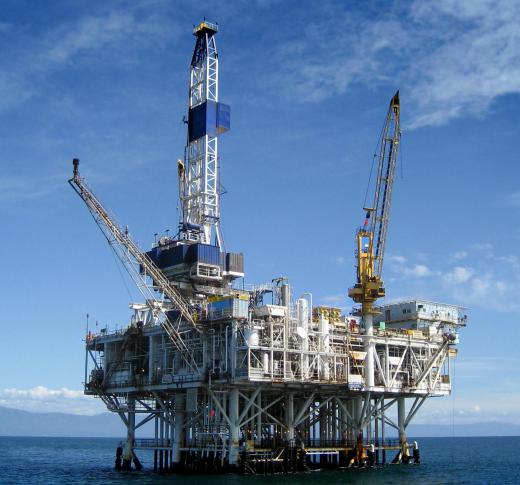A blowout preventer consists of a complex series of valves used in industrial drilling equipment to permit closing an oil well if dangerous pressure builds. The blowout preventer sits on the ocean floor and is capable of shutting off the flow of petroleum when the risk of a gusher arises. Blowout preventers are designed in different sizes and styles to meet the needs of offshore drilling operations.
The blowout preventer was invented in 1922 with valves created in two styles. Ram valves employ pistons fitted into the drilling pipe that are capable of sealing the hole to the oil well. Annular devices use reinforced rubber to perform a similar task, but they provide a smoother action and require less maintenance. The annular valves also last longer than ram valves because they require less pressure to operate.

Valves on a blowout preventer can be opened and closed hydraulically or manually. Automatic systems might operate via a remote device to open and close pipes leading to the well hole. The remote control is generally connected via cable to the surface of the drilling rig. Some blowout preventers use undersea sound to control the valves, which is required in some countries.

A series of four to 10 valves, each fitted with various methods of opening and closing, attach to the pipes from the rig to the sea floor. Annular and ram valves are both routinely used in a single blowout preventer in case one type fails to stem the flow of oil. Another mechanism, called a top kill, uses a choke to allow the pumping of drilling mud into the hole to ease pressure that cannot be addressed through the blowout preventer.
Drilling mud is actually a fluid used in offshore drilling equipment to regulate the amount of pressure in pipes. If too much pressure builds, especially if gases are present, it could cause an explosion or an underwater oil spill. The mud can be removed and drilling can resume once the pressure is stabilized.
Gushers are considered rare because of strict testing and maintenance regulations in most countries. A blowout preventer needs frequent testing to ensure it is operating correctly to protect the environment and the drilling crew. It is designed as a complex piece of safety equipment used on all deep sea drilling rigs.
